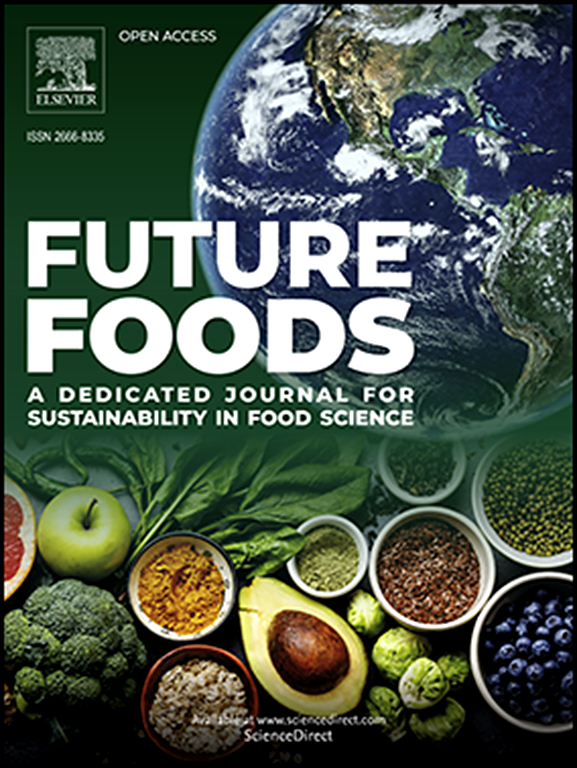Mechanistic insights to the strong antioxidative capacity of lingonberry press cake during recovery of fish protein ingredients
IF 7.2
Q1 FOOD SCIENCE & TECHNOLOGY
引用次数: 0
Abstract
Lingonberry press cake (LPC) has been shown to limit lipid oxidation in fish filleting co-products during pH-shift processing. To explore the underlying mechanism, this study subjected LPC to pH-shift processing (native pH → pH 12 → pH 5), and analyzed the resultant fractions for phenolic content and antioxidant capacity. It was observed that LPC experienced a 23.73 % reduction in total phenolic content (TPC) when the initial homogenate was adjusted to pH 12; however, no significant further losses were noted during centrifugation or subsequent adjustment to pH 5. Both LPC and the soluble fraction at pH 5 (“S2”) demonstrated effective inhibition of hemoglobin (Hb)-mediated lipid oxidation in washed cod mince (WCM) model system. Additionally, the insoluble fraction at pH 5 (“P2”) exhibited the strongest binding to WCM. Proanthocyanidin A1 and cyanidin 3-O-galactoside were identified as the most effective antioxidants in LPC. Overall, this study affirms LPC's value as an effective natural antioxidant ingredient in muscle foods and proposes an innovative strategy for valorizing multiple food side streams together to support sustainable development.
越橘压榨饼在鱼蛋白成分回收过程中的强抗氧化能力的机理启示
研究表明,越橘压榨饼(LPC)可在 pH 值转换加工过程中限制鱼片副产品中的脂质氧化。为探索其潜在机制,本研究对越橘压榨饼进行了 pH 值转换处理(原生 pH → pH 12 → pH 5),并分析了所得馏分中的酚含量和抗氧化能力。结果表明,当初始匀浆调整到 pH 12 时,LPC 的总酚含量(TPC)降低了 23.73%;然而,在离心或随后调整到 pH 5 的过程中,并没有发现明显的进一步损失。 在水洗鳕鱼肉(WCM)模型系统中,LPC 和 pH 5 的可溶性馏分("S2")都能有效抑制血红蛋白(Hb)介导的脂质氧化。此外,pH 值为 5 的不溶部分("P2")与 WCM 的结合力最强。原花青素 A1 和花青素 3-O-半乳糖苷被确定为 LPC 中最有效的抗氧化剂。总之,这项研究肯定了 LPC 作为肌肉食品中一种有效的天然抗氧化剂成分的价值,并提出了一种创新战略,将多种食品副产品的价值结合在一起,以支持可持续发展。
本文章由计算机程序翻译,如有差异,请以英文原文为准。
求助全文
约1分钟内获得全文
求助全文
来源期刊

Future Foods
Agricultural and Biological Sciences-Food Science
CiteScore
8.60
自引率
0.00%
发文量
97
审稿时长
15 weeks
期刊介绍:
Future Foods is a specialized journal that is dedicated to tackling the challenges posed by climate change and the need for sustainability in the realm of food production. The journal recognizes the imperative to transform current food manufacturing and consumption practices to meet the dietary needs of a burgeoning global population while simultaneously curbing environmental degradation.
The mission of Future Foods is to disseminate research that aligns with the goal of fostering the development of innovative technologies and alternative food sources to establish more sustainable food systems. The journal is committed to publishing high-quality, peer-reviewed articles that contribute to the advancement of sustainable food practices.
Abstracting and indexing:
Scopus
Directory of Open Access Journals (DOAJ)
Emerging Sources Citation Index (ESCI)
SCImago Journal Rank (SJR)
SNIP
 求助内容:
求助内容: 应助结果提醒方式:
应助结果提醒方式:


